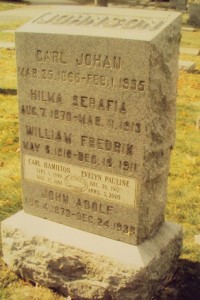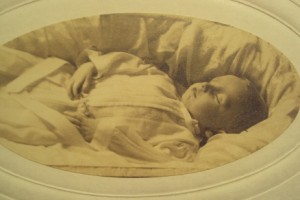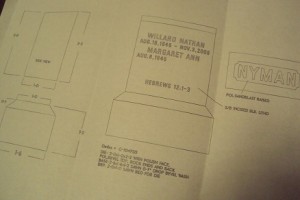The girls and I went through a Jerry Seinfeld stage several years back, guffawing at his stand-up comedy and the DVDs of his shows. One of the jokes stuck with me, a clever commentary on children and parents:
 When you’re little, your life is up. The future is up. Everything you want is up.
When you’re little, your life is up. The future is up. Everything you want is up.
“Wait up! Hold up! Shut up! Mom, I’ll clean up! Just let me stay…up!”
Parents, of course, are just the opposite. Everything is down.
“Just calm down. Slow down. Come down here. Sit down. Put that… down!”
I would add one more “up” from a child’s point of view. “Everything I want to get my hands on is… up!”
Before my five grandchildren arrived in December, I babyproofed the house. But short of emptying rooms, I couldn’t hit 100%. I removed breakables and swallowable objects in every room from three feet and down but still heard, “What’s Evelyn chewing on? What’s Micah putting in his mouth?” We’ve removed barrettes, pieces of plastic, tiny bits of broken toys and blobs of sopped paper.
As the days passed, our toddlers became experts at extending their reach higher and higher. Not even the kitchen counters were a safe zone after they discovered a couple of plastic stools. Now the only out-of-reach spots are the mantle and the tops of bookcases, hutches and the refrigerator.
 Car keys, cell phones, ipods, DVDs, candles, phone chargers and other valuables have been heaped high in places we can barely reach. To the adults, it’s a slight inconvenience. To the children, it’s intense frustration. Their days are spent looking… up… and scheming ways to retrieve what looks so appealing from down-low.
Car keys, cell phones, ipods, DVDs, candles, phone chargers and other valuables have been heaped high in places we can barely reach. To the adults, it’s a slight inconvenience. To the children, it’s intense frustration. Their days are spent looking… up… and scheming ways to retrieve what looks so appealing from down-low.
The problem comes in having cross purposes. Our little ones judge themselves perfectly capable of properly handling the breakables while we know the truth, that their touch means death to valuables. Interestingly, when we provide substitutes, (toy phones or blank keys), they quickly learn the ploy and toss them aside.
Little children are to us what we are to God. When we look to him, it’s always “up”. He’s higher than we are in all categories, and his decisions to keep certain things out of our reach are always for our good. Just as our kids can’t understand why so many things have to be put up, we get frustrated when God doesn’t rescue us quickly or answer prayer our way.
Unlike toddlers who whine and reach up indefinitely, I ought to acquiesce quickly and be willing to let the up’s stay up. Because when I’m gazing up with cravings, I’m missing what’s already come down from God, most significantly, Jesus himself. And one day he’ll come down again, triumphing over every evil. 
When the battles are over, a new heaven and earth will also come down. And when that happens, even the frsutrated toddlers will finally have everything they ever wanted.
“Every good and perfect gift is from above, coming down from the Father of the heavenly lights.” (James 1:17)




